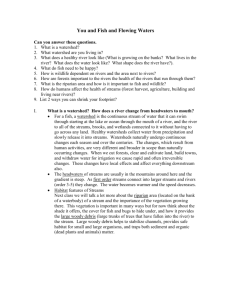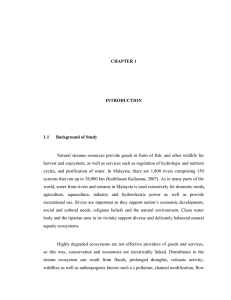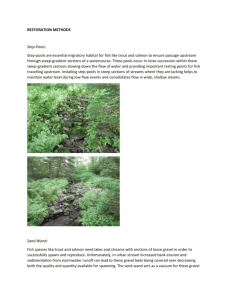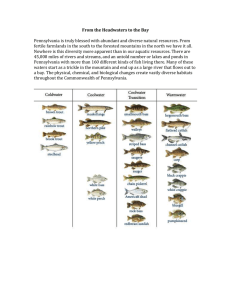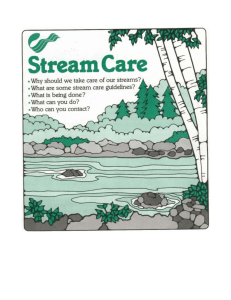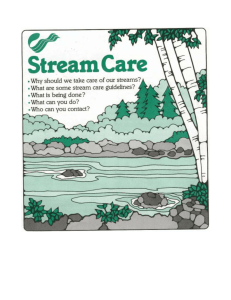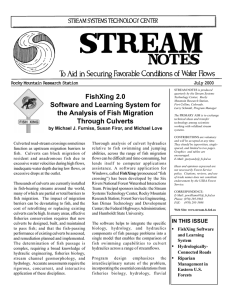Long Term Effects of Culvert Construction on Fish
advertisement
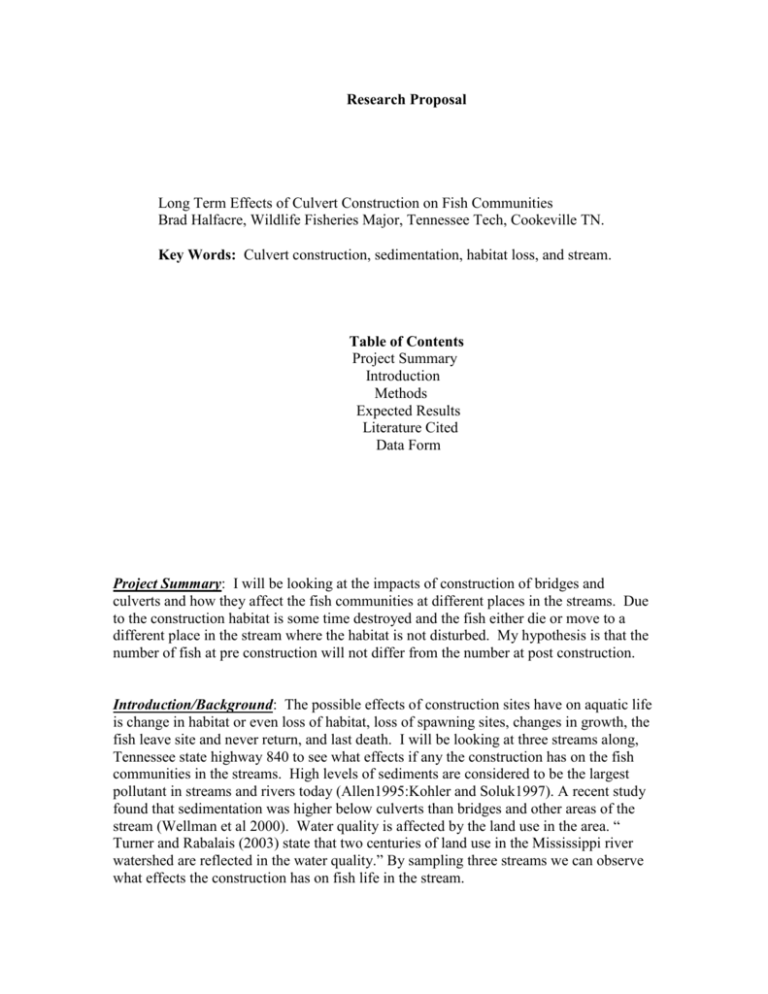
Research Proposal Long Term Effects of Culvert Construction on Fish Communities Brad Halfacre, Wildlife Fisheries Major, Tennessee Tech, Cookeville TN. Key Words: Culvert construction, sedimentation, habitat loss, and stream. Table of Contents Project Summary Introduction Methods Expected Results Literature Cited Data Form Project Summary: I will be looking at the impacts of construction of bridges and culverts and how they affect the fish communities at different places in the streams. Due to the construction habitat is some time destroyed and the fish either die or move to a different place in the stream where the habitat is not disturbed. My hypothesis is that the number of fish at pre construction will not differ from the number at post construction. Introduction/Background: The possible effects of construction sites have on aquatic life is change in habitat or even loss of habitat, loss of spawning sites, changes in growth, the fish leave site and never return, and last death. I will be looking at three streams along, Tennessee state highway 840 to see what effects if any the construction has on the fish communities in the streams. High levels of sediments are considered to be the largest pollutant in streams and rivers today (Allen1995:Kohler and Soluk1997). A recent study found that sedimentation was higher below culverts than bridges and other areas of the stream (Wellman et al 2000). Water quality is affected by the land use in the area. “ Turner and Rabalais (2003) state that two centuries of land use in the Mississippi river watershed are reflected in the water quality.” By sampling three streams we can observe what effects the construction has on fish life in the stream. Methods and Materials: Three construction sites on three different streams will be sampled. Each stream will have 100-meter sampling areas. An undisturbed control site 100 meters up stream, a disturbed site (impact site) at the structure under construction, and 150 meters down stream from the impact site. Electro fishing, done with a backpack shocker, involves sending electric shocks through the water to bring fish to the water surfaces they can be caught and identified. This is done at each site to monitor the effects of construction on the stream. Due to stream size electorofishing is the best sampling tech. to use. “ Kelsch and Shields (1996) states that proper adjustment of current will stun fishes and complete recovery is possible.” We want the quickest possible recovery on the fish in this study. Expected Results: I expect to find a high richness and diversity at the control sites; at the impact sites I expect those numbers to fall due to the disturbance of the construction. Although after construction I expect to see the numbers to increase back to normal levels. It will just take some time. Literature Cited 1. Allen, J. D. 1995. Stream ecology: structure and function of running waters. Chapman, and Hall, 2. 3. 4. 5. Alden Press, Oxford, Great Britain. Kelsch, Steven W., and Shields, Barbara. 1996 Care and Handling of sampled Organisms. Page 149 in B.R. Murphy and D.W. Willis, editors. Fisheries techniques, 2 nd edition. American Fisheries Society, Bethesda, Maryland. Kohler, S. L., and D. A., Soluk. 1997. Effects of sedimentation on stream communities. Illinois Natural History Survey Reports No. 345.pp Wellman J. C., D. L. Combs, and S. B. Cook 2000. Long term impacts of Bridge and culvert construction or replacement on fish communities and sediment characteristic of streams. Journal of Fresh water Ecology 15: 317-328 Turner, R. Eugene, Rabalais, Nancey, N. Bioscience June 2003 Vol. 53 iss 6pp 2003.
